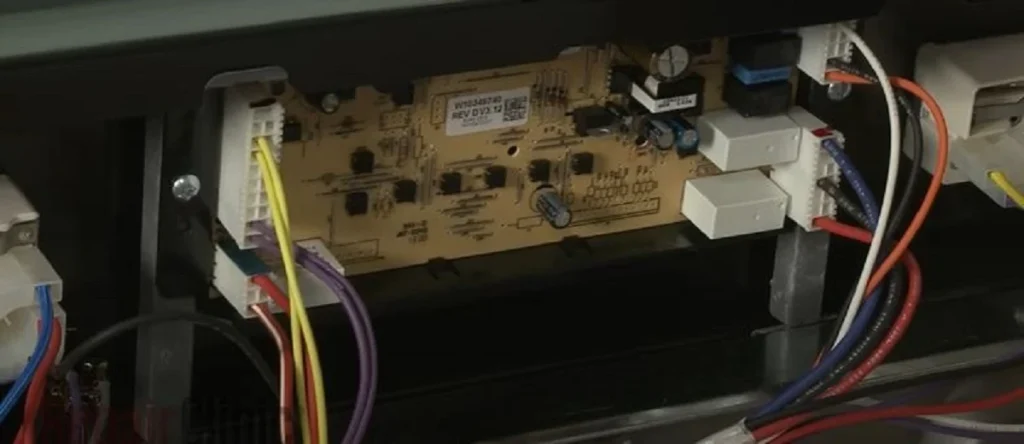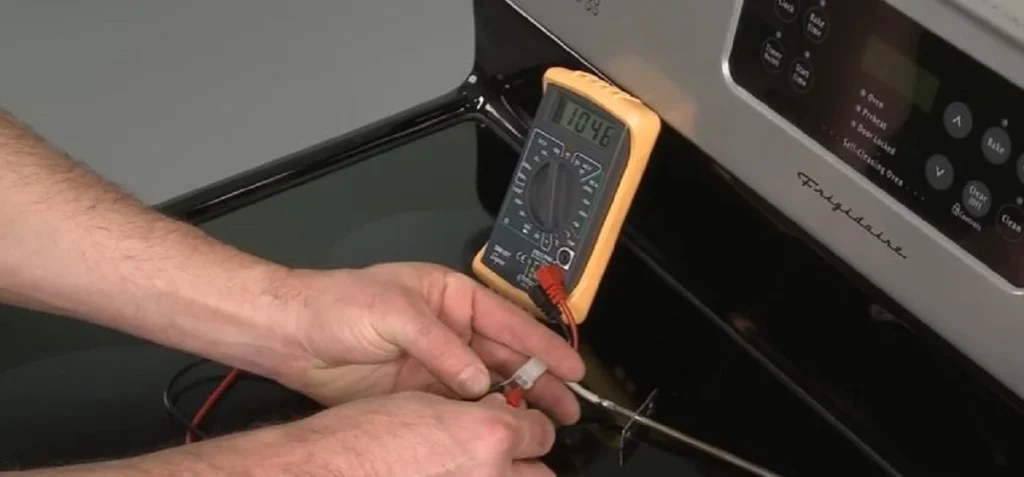Note: This article may contain affiliate links, which means if you make a purchase following our links won’t cost you extra, but we may earn a commission. Learn more
When an electric stove oven fails to heat up, the primary culprits are often a malfunctioning heating element or a faulty oven thermostat. These issues can prevent the oven from reaching the desired temperature, despite the stove top working perfectly. This discrepancy can be puzzling but is usually due to separate circuits and mechanisms controlling the oven and stove top functions.
The effectiveness of an electric oven hinges on the condition of its heating elements and thermostat. A broken or worn-out heating element is the most direct cause of an oven not heating. These elements can fail over time due to wear and tear or electrical issues, leading to uneven or no heating.
Similarly, a defective thermostat can misread the oven’s temperature, preventing the oven from turning on or reaching the correct temperature. Inspecting these components for damage or irregularities can often reveal the source of the problem.
Electrical issues extend beyond the heating elements and thermostat. Wiring within the oven can suffer from damage or wear, leading to poor connections and failure to heat.
This includes both the power supply wires to the bake or broil elements, which may burn out or disconnect near the heat source. A visual inspection can uncover loose or burnt wire connections, indicating the need for repairs.
Circuitry is another critical aspect, as even minor issues can significantly impact performance. A tripped circuit breaker or a blown fuse can prevent the oven from heating altogether. It’s advisable to check the home’s electrical panel for any tripped circuits or blown fuses that might be affecting the oven’s operation.

Read More:
- Whirlpool Gas Oven Not Working/ Heating Up Properly!
- Electric Oven Getting Too Hot! What to Do
- My Electric Oven is Off But Still Heating! What to Do?
How to Diagnose and Repair an Electric Oven That Won’t Heat
1. Faulty Heating Elements
The heating elements are the workhorses of your oven, responsible for generating the heat necessary for cooking. Over time, these elements can burn out or become defective, leading to an oven that doesn’t heat up. To diagnose a faulty heating element, visually inspect it for any signs of damage or blistering. If it appears damaged, replacing the heating element is straightforward. Most elements are secured with a couple of screws and connected with plug-in or screw-on connections, making replacement a relatively simple DIY task.
2. Malfunctioning Oven Thermostat
The thermostat monitors the oven’s temperature and turns the heating elements on and off to maintain the desired temperature. A malfunctioning thermostat can result in an oven that doesn’t heat correctly or at all. Testing the thermostat involves using a multimeter to check for continuity. If the thermostat shows no continuity at room temperature, it needs to be replaced. Due to the complexity of this repair, involving electrical components and calibration, it may be best to enlist the services of a professional technician.
3. Compromised Wiring or Connections
Over time, the wiring or connections within your oven can become loose or damaged due to heat exposure and general wear and tear. Compromised wiring can prevent electricity from reaching the heating elements or thermostat. Inspecting the wiring requires disconnecting the oven from the power source and visually checking for signs of damage, wear, or loose connections. Repairing wiring issues usually entails replacing the damaged wires or securing loose connections, tasks that might require a professional’s expertise for safety and effectiveness.
4. Tripped Circuit Breaker or Blown Fuse
Occasionally, the problem might not lie within the oven itself but with your home’s electrical system. A tripped circuit breaker or blown fuse can cut off power to the oven, preventing it from heating up. Check your home’s electrical panel for any tripped breakers or blown fuses, and reset or replace them as necessary. If the issue persists, it could indicate a more severe electrical problem requiring professional assessment.
5. Defective Oven Temperature Sensor
Modern electric ovens often use a temperature sensor to monitor the oven’s internal temperature and adjust the heating elements accordingly. A defective sensor can lead to inaccurate temperature control, resulting in an oven that doesn’t heat up properly. Testing the sensor with a multimeter for resistance and comparing it to the manufacturer’s specifications can help determine if it’s functioning correctly. If the sensor is found to be defective, replacing it is usually a simple procedure involving the removal of a few screws and disconnecting the sensor from its wiring harness.

Essential Maintenance to Prevent Electric Oven Woes
Keeping your electric oven in tip-top shape involves a blend of regular cleaning, routine inspections, and timely professional servicing. Dirt and grease accumulation can impede your oven’s performance and even pose fire hazards. Adopting a habit of wiping down the interior with a mild cleaner after each use, focusing on removing spills and splatters, can significantly reduce these risks. Beyond cleanliness, inspecting your oven for wear and tear, especially around seals and heating elements, can catch issues before they escalate.
However, not all maintenance can be DIY. Professional servicing is pivotal for deeper issues like electrical faults or thermostat calibration. An expert can thoroughly inspect, clean areas difficult to reach, and ensure your oven operates efficiently. This proactive approach not only extends your oven’s lifespan but also prevents the common headache of it not heating up properly.
Decoding Oven Heating Symptoms
Identifying the root cause of an oven not heating requires keen observation of symptoms. Variations in heating issues can indicate specific malfunctions. For instance, an oven that heats but doesn’t reach the set temperature might have a faulty thermostat or sensor, while an oven not heating at all could signal an issue with the heating element or electrical supply.
Recognizing these symptoms is the first step towards an accurate diagnosis. It’s essential to note if the problem occurs during baking or broiling, as this can hint at which element may be failing. Similarly, uneven cooking or longer cooking times can suggest issues with temperature sensors or distribution.
In many cases, diagnosing and repairing electrical appliances demands expertise. Seeking professional help not only ensures a correct diagnosis but also guarantees safe and effective repairs. Technicians can offer insights into whether a repair is worth it or if replacing the oven might be more cost-effective in the long run.
Oven’s Cold, Stove’s Hot: Unpacking the Paradox
It’s perplexing when the stove works but the oven doesn’t. This situation often points to separate issues within the appliance, given that the stove and oven use different components to generate heat. The problem could stem from a myriad of sources – from a simple issue like a tripped circuit breaker or blown fuse, which would cut off power to the oven but not the stove, to more complex problems like a malfunctioning oven control board or a broken heating element.
For electric stoves, a working top and a non-heating oven typically exclude problems with the main power supply, directing the troubleshooting towards the oven’s internal components. Checking the heating elements for visible damage or testing them with a multimeter can reveal if they need replacing. Similarly, inspecting the oven’s wiring and connections for signs of wear or damage can uncover electrical issues.
Since these repairs involve dealing with electrical components, safety is paramount. Turning off the power before attempting any inspection is crucial, and for many, this is where the line is drawn. Professional technicians not only have the expertise to safely navigate these repairs but also the tools and parts to fix them efficiently, making them an invaluable resource for resolving this perplexing issue.